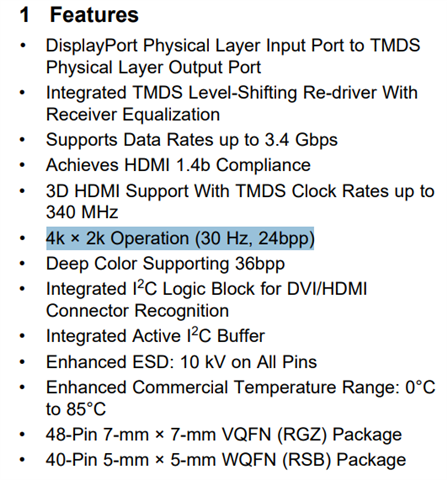Tool/software:
Hi expert,
My customer is using SN75DP139 in their system but find it can't display in 4k but can display in 2k. The schematics is 20250707_DMS-BC36_HDMI_DP139.pdf
Can you help to check is there any configuration needed when change from 2k to 4k? Or is there any hardware configuration when setting to 4k?
Can you help to review the schematic?
BRs,
Rannie








